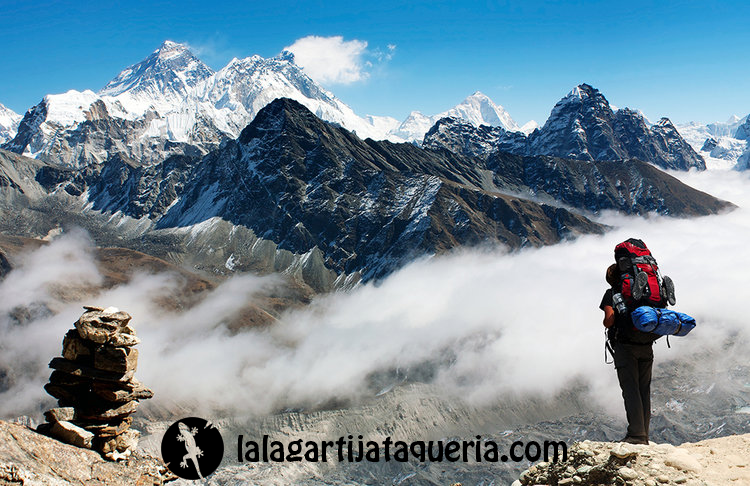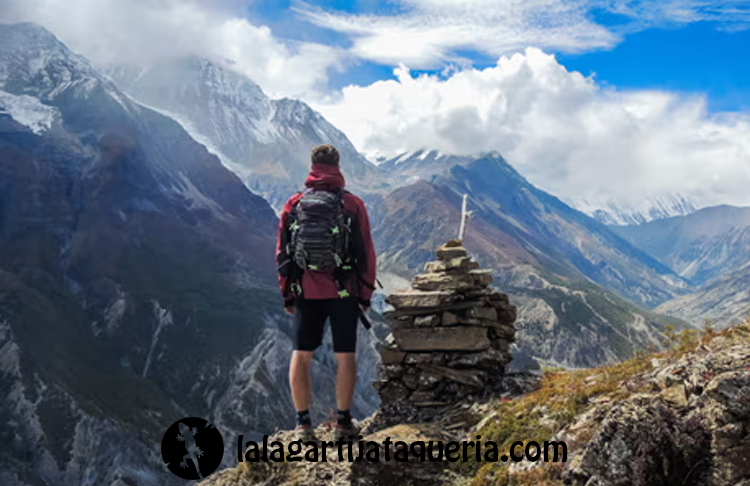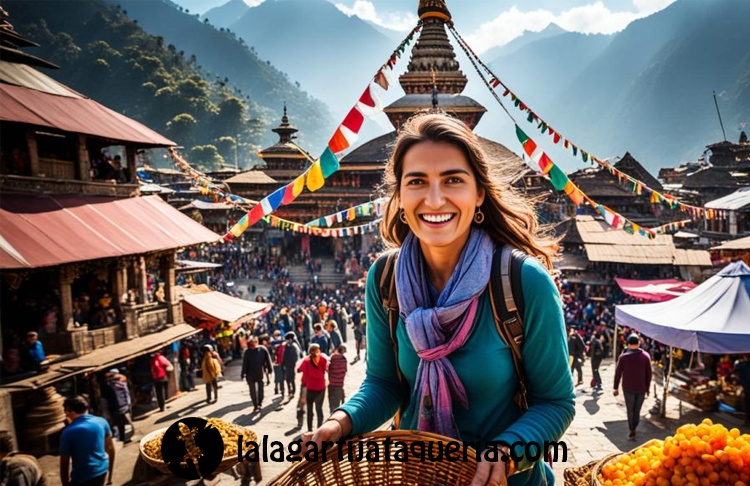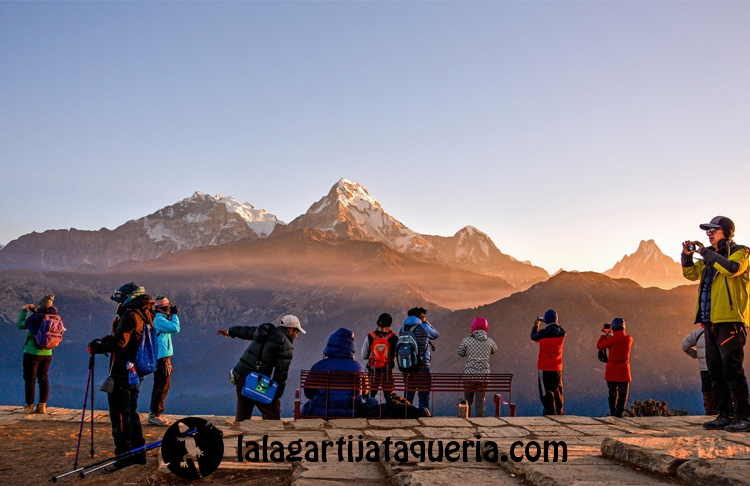
Nepal Travel Itinerary for an Epic 10-Day Adventure
If you’re dreaming of a journey through breathtaking landscapes, ancient cities, and thrilling outdoor experiences, this Nepal Travel Itinerary is the guide you need. Nepal is the perfect destination for adventurers, offering everything from trekking the mighty Himalayas to exploring the rich cultural heritage of its medieval towns. With this Nepal Travel Itinerary, we’ll help you plan the adventure of a lifetime, ensuring you experience the best this diverse country has to offer.
From the bustling streets of Kathmandu to the serene beauty of Pokhara and the wild landscapes of Chitwan, each location presents unique opportunities to delve into Nepal’s rich culture and embrace its natural wonders. Whether you have a week or two, this Nepal Travel Itinerary ensures you make the most of your time.
Ultimate Nepal Travel Itinerary for Adventurers

Nepal is a destination that caters to all types of adventurers. If you’re an adrenaline junkie, the peaks of the Himalayas offer an array of challenging treks, including the famous Everest Base Camp trek. For those seeking cultural experiences, the ancient cities of Kathmandu Valley house temples, shrines, and palaces that date back centuries. Here’s an ultimate Nepal travel itinerary designed to help you navigate the must-visit destinations and thrilling activities in Nepal.
To get the best experience out of your Nepal Travel Itinerary, consider dividing your time between these main regions:
- Kathmandu Valley: Immerse yourself in Nepal’s rich history and culture with visits to heritage sites like Durbar Square, Swayambhunath, and Pashupatinath.
- Pokhara: Experience adventure activities like paragliding, boating on Phewa Lake, and trekking to viewpoints such as Sarangkot.
- Chitwan National Park: For wildlife enthusiasts, Chitwan offers jungle safaris where you can spot the one-horned rhinoceros, Bengal tigers, and diverse birdlife.
With this structured Nepal Travel Itinerary, your adventure will be packed with excitement and exploration.
Introduction to Nepal: Gateway to Adventure
Nepal, often known as the “Gateway to the Himalayas,” is a paradise for adventurers and nature lovers. From the bustling streets of Kathmandu to the serene landscapes of Pokhara and the untouched wilderness of Chitwan, the country offers an incredible blend of history, culture, and outdoor adventures. The diversity of activities and destinations in Nepal makes it an ideal choice for travelers looking to dive deep into the wonders of South Asia.
When planning your Nepal Travel Itinerary, remember that each region offers a distinct experience. Kathmandu introduces you to the spiritual side of Nepal with its centuries-old temples and shrines. Pokhara provides a tranquil escape, surrounded by lakes and mountains. For wildlife lovers, Chitwan National Park presents a thrilling chance to encounter some of Asia’s most impressive animals. Crafting your Nepal Travel Itinerary around these locations will ensure a memorable and fulfilling trip.
Best Time to Visit Nepal

When crafting your Nepal Travel Itinerary, it’s essential to consider the best time to visit to make the most of your adventure. Nepal’s climate varies greatly depending on the region and altitude, which makes planning your trip according to the seasons crucial. While Nepal is a year-round destination, the most popular time to visit is during the autumn (October-November) and spring (March-April) months. During these periods, you’ll find clear skies, pleasant temperatures, and excellent conditions for trekking and outdoor activities.
For adventurers planning to trek in the Himalayas, these months offer the best visibility of Nepal’s stunning mountain ranges. If wildlife safaris in Chitwan National Park or visiting cultural sites in Kathmandu are more your style, you’ll also benefit from mild weather and fewer chances of rain. Whether you’re trekking to Everest Base Camp, exploring Pokhara, or wandering the ancient streets of Bhaktapur, planning your Nepal Travel Itinerary around these seasons will enhance your overall experience.
If you’re flexible with your dates, off-season travel in Nepal during the monsoon or winter can also be rewarding. These periods are less crowded, and while the weather can be more challenging, it offers a more peaceful and unique experience.
Seasons and Weather Conditions
Understanding Nepal’s weather patterns will help you decide the ideal time for your Nepal Travel Itinerary. Nepal experiences four primary seasons:
- Autumn (October-November): This is the best time to visit Nepal for clear skies and perfect trekking conditions. The temperatures are moderate, making it comfortable for outdoor activities, and the landscapes are lush from the preceding monsoon season.
- Spring (March-April): Spring is another excellent time to visit, especially for those who want to see Nepal’s vibrant blooming rhododendrons and enjoy pleasant weather. It’s a great time for trekking, and the visibility of the mountains remains impressive.
- Monsoon (June-September): While the monsoon season brings heavy rainfall, especially in the lower regions, it’s also a quieter period for travelers. The rain can cause landslides and make trekking trails slippery, but if you’re more interested in cultural exploration or are traveling to rain-shadow regions like Upper Mustang, this season still has its charm.
- Winter (December-February): Winter in Nepal means colder temperatures, especially in the higher altitudes. However, lower regions such as Kathmandu and Chitwan still offer mild weather, and it’s an excellent time to visit if you prefer fewer crowds and don’t mind bundling up.
Avoiding the Monsoon Season
When planning your Nepal Travel Itinerary, one of the key considerations is the monsoon season, which typically lasts from June to September. During this period, heavy rains can lead to challenging travel conditions, including muddy trails and increased risk of landslides, particularly in mountainous areas. While this season has its unique beauty, with lush landscapes and fewer tourists, it may not be ideal for those looking for outdoor adventures or trekking.
If your primary goal is to trek in the Himalayas or engage in outdoor activities, it’s advisable to avoid the monsoon season altogether. Instead, consider scheduling your trip during the autumn or spring months when the weather is more favorable. This will allow you to fully enjoy the breathtaking scenery and vibrant culture without the disruptions caused by heavy rainfall.
By being mindful of the monsoon season while planning your Nepal Travel Itinerary, you can ensure a smoother, more enjoyable experience in this stunning country.
Essential Travel Preparations
Preparing for your trip to Nepal involves several essential steps that can significantly enhance your travel experience. From understanding the local customs to ensuring you have the necessary documentation, a little preparation goes a long way. A well-thought-out Nepal Travel Itinerary includes not only sightseeing but also practical preparations that will set you up for a successful adventure.
Before you embark on your journey, it’s important to gather information about what to expect and how to prepare. From booking accommodations and planning transportation to familiarizing yourself with local customs and traditions, every detail contributes to a smoother trip. This section will cover vital travel preparations you need to consider before arriving in Nepal.
Visa and Entry Requirements
One of the first steps in your Nepal Travel Itinerary should be understanding the visa and entry requirements for Nepal. Most travelers will need a visa to enter the country, which can be obtained either in advance or upon arrival at the airport. Here are some key points to keep in mind:
- Visa on Arrival: Most nationalities can obtain a visa on arrival at Tribhuvan International Airport in Kathmandu. It’s advisable to have a passport-sized photo and sufficient cash (in US dollars or Nepalese rupees) to cover the visa fee.
- Tourist Visa: The tourist visa is typically valid for 15, 30, or 90 days, depending on your travel needs. Make sure to check the latest regulations as they can change.
- Passport Validity: Ensure your passport is valid for at least six months beyond your planned departure date from Nepal. This is a requirement for entry.
- COVID-19 Regulations: Depending on current health guidelines, you may need to show proof of vaccination or a negative test result, so check the latest requirements before your trip.
By ensuring you have the correct visa and entry documentation, you’ll avoid any unexpected hassles and can focus on enjoying your Nepal Travel Itinerary to the fullest.
Perfect 10-Day Itinerary for Adventure Seekers

For those eager to experience the thrill and beauty of Nepal, this perfect 10-day itinerary is designed specifically for adventure seekers. It combines cultural exploration with outdoor activities, ensuring you get a comprehensive taste of what this remarkable country has to offer. From the vibrant streets of Kathmandu to the stunning views of the Himalayas, this itinerary will guide you through an unforgettable journey that highlights both adventure and culture.
Each day of this 10-day itinerary is carefully crafted to balance trekking, sightseeing, and relaxation, allowing you to fully immerse yourself in Nepal’s diverse landscapes and rich traditions. Get ready to embark on an adventure filled with breathtaking scenery, unique experiences, and memories that will last a lifetime!
Day 1-2: Kathmandu Exploration
Your adventure begins in Kathmandu, the bustling capital of Nepal. Spend your first two days delving into the city’s rich history and vibrant culture. Here are some highlights for your Nepal Travel Itinerary:
- Day 1: Arrive in Kathmandu and check into your hotel. Spend your day exploring the UNESCO World Heritage Sites, including the iconic Swayambhunath (Monkey Temple), where you can enjoy panoramic views of the city. Later, visit Kathmandu Durbar Square, home to stunning temples and royal palaces. Don’t forget to savor local cuisine at a traditional restaurant.
- Day 2: Dedicate this day to exploring Pashupatinath Temple, one of the holiest Hindu sites, followed by a visit to Boudhanath Stupa, a massive stupa and a center for Tibetan Buddhism. Take a leisurely stroll through the Thamel district, where you can shop for souvenirs and experience the lively atmosphere.
These first two days in Kathmandu set a solid foundation for your Nepal Travel Itinerary, combining culture, spirituality, and the warmth of local hospitality.
Day 3-4: Nagarkot Sunrise and Bhaktapur
On Day 3, embark on a scenic drive to Nagarkot, a popular hill station known for its breathtaking sunrise views over the Himalayas. Here’s how to plan these two days:
- Day 3: Depart early from Kathmandu to reach Nagarkot. Check into a hotel with a view and spend the afternoon hiking nearby trails, immersing yourself in the natural beauty of the region. As night falls, prepare for an early morning wake-up to catch the stunning sunrise.
- Day 4: Wake up before dawn to witness a spectacular sunrise over the snow-capped peaks of the Himalayas. After soaking in the views, head to Bhaktapur, another UNESCO World Heritage Site. Explore its medieval squares, ancient temples, and the famous Bhaktapur Durbar Square. Be sure to try the local delicacy, king curd (juju dhau), before returning to Kathmandu.
Day 5-6: Pokhara – The Adventure Hub
On Day 5, head to Pokhara, the adventure capital of Nepal, which is located about 200 km from Kathmandu. Known for its stunning natural beauty and thrilling activities, this destination is perfect for adrenaline junkies and nature lovers alike.
- Day 5: Upon arrival in Pokhara, take some time to relax by the peaceful Phewa Lake, where you can rent a boat or simply enjoy the stunning views of the Annapurna mountain range. In the afternoon, explore the vibrant lakeside town and its markets. As the sun sets, consider visiting the World Peace Pagoda, which offers a panoramic view of the city, lake, and mountains.
- Day 6: Get ready for a day full of adventure! Pokhara offers numerous activities such as paragliding, zip-lining, or even bungee jumping. For those seeking something less extreme, you can trek to Sarangkot to catch the sunrise or explore the fascinating Gupteshwor Cave and Devi’s Fall. With so many options, your Nepal Travel Itinerary will be brimming with adventure in Pokhara.
These two days will provide you with plenty of exhilarating experiences, making Pokhara a highlight of your Nepal Travel Itinerary.
Day 7-8: Chitwan National Park Safari
After your adventures in Pokhara, travel south to Chitwan National Park, a UNESCO World Heritage Site and one of the best places in Asia to spot wildlife. Chitwan offers a unique jungle safari experience, far removed from the mountainous regions of Nepal.
- Day 7: Arrive at Chitwan and settle into one of the many jungle lodges. In the afternoon, you can embark on a jungle walk or a jeep safari, where you’ll have the opportunity to see wildlife such as one-horned rhinos, elephants, leopards, and, if you’re lucky, the elusive Bengal tiger.
- Day 8: Start the day with a peaceful canoe ride along the Rapti River, where you can spot crocodiles and birdlife. Later, visit the Elephant Breeding Center or enjoy a cultural experience with a local Tharu dance performance. The diverse activities in Chitwan make this a fantastic addition to your Nepal Travel Itinerary.
These two days in Chitwan provide a thrilling contrast to the mountainous adventures, offering a glimpse into Nepal’s rich wildlife and jungle ecosystem.
Day 9-10: Lumbini – Birthplace of Buddha
Conclude your Nepal Travel Itinerary with a visit to Lumbini, the birthplace of Buddha, located in the Terai plains of southern Nepal. This sacred site is a major pilgrimage destination for Buddhists worldwide.
- Day 9: After traveling to Lumbini, spend the afternoon visiting the Maya Devi Temple, where Buddha is said to have been born. Wander through the Lumbini Garden, exploring the various stupas and monasteries built by Buddhist communities from around the world.
- Day 10: Take a final day to explore the Lumbini Monastic Zone, where you can find monasteries from countries like Thailand, China, and Japan. Each structure reflects the architectural style and traditions of its country. End your trip by meditating or reflecting at this peaceful, spiritually rich site.
Lumbini offers a serene and contemplative end to your adventurous Nepal Travel Itinerary, providing both a cultural and spiritual experience to conclude your journey.
Packing List for a Nepal Adventure
Preparing for your adventure in Nepal requires careful consideration of what to pack. A well-thought-out packing list is essential to ensure you’re equipped for the diverse activities and varying climates you’ll encounter during your Nepal Travel Itinerary. Whether you’re trekking through the Himalayas, exploring cultural sites, or enjoying wildlife safaris, having the right gear will enhance your experience and keep you comfortable throughout your journey.
This section will help you compile a comprehensive packing list tailored specifically for adventure seekers. From clothing to essential gear, being prepared will allow you to focus on enjoying all that Nepal has to offer without worrying about forgotten items.
Essentials for Trekking and Adventure
When packing for your Nepal Travel Itinerary, especially if trekking is on your agenda, certain essentials are crucial for a safe and enjoyable experience. Here’s a list of items you should consider bringing:
- Footwear: Invest in a good pair of trekking boots with ankle support, as well as comfortable sandals for relaxing after hikes.
- Clothing: Layering is key. Bring moisture-wicking base layers, insulating mid-layers (like fleece), and a waterproof outer layer. Don’t forget warm hats, gloves, and thermal socks for colder temperatures.
- Backpack: A comfortable daypack for day hikes, ideally with hydration options, is essential.
- Trekking Poles: These can provide extra support on uneven terrain and reduce strain on your knees.
- First Aid Kit: Include basic supplies like adhesive bandages, antiseptic wipes, and any personal medications.
- Water Purification: A portable water filter or purification tablets is vital for ensuring safe drinking water during treks.
- Sun Protection: Sunscreen, lip balm with SPF, sunglasses, and a wide-brimmed hat will protect you from the intense sun, especially at higher altitudes.
- Personal Items: Bring a lightweight towel, toiletries, and any other personal comfort items you might need.
Responsible Travel in Nepal

As you plan your Nepal Travel Itinerary, it’s important to consider responsible travel practices. Nepal’s natural beauty, cultural heritage, and local communities are its greatest treasures, and ensuring that your visit has a positive impact is key to preserving these for future generations. Being a responsible traveler means respecting the local environment, supporting the local economy, and minimizing your carbon footprint.
Nepal’s fragile ecosystems, particularly in mountainous regions, can be vulnerable to the impact of mass tourism. Additionally, respecting the culture and traditions of the Nepalese people plays a significant role in responsible travel. Whether you are trekking in the Himalayas, visiting religious sites, or staying in local villages, adopting sustainable practices is crucial for a positive, respectful travel experience.
Eco-Friendly Travel Practices
To make your Nepal Travel Itinerary as eco-friendly as possible, here are some practical tips:
- Minimize Plastic Use: Nepal faces significant plastic waste challenges, particularly in remote trekking areas. Avoid single-use plastics by carrying a reusable water bottle and using water purification tablets or filters.
- Leave No Trace: When trekking, ensure you carry all your waste out with you. Avoid littering on trails and in villages, and follow the “leave no trace” principle to help preserve Nepal’s natural beauty.
- Support Local Businesses: Opt for locally owned accommodations, restaurants, and shops. This supports the local economy and helps you connect with authentic Nepalese culture.
- Respect Wildlife and Nature: Whether you’re visiting Chitwan National Park or trekking through the Himalayas, be mindful of the local wildlife. Avoid disturbing animals, and stick to designated trails to prevent damage to fragile ecosystems.
- Cultural Respect: When visiting religious and cultural sites, dress modestly and follow local customs. Always ask permission before taking photos of people, and be respectful of sacred spaces.
By incorporating these eco-friendly practices into your Nepal Travel Itinerary, you can help reduce the environmental and cultural impact of tourism while enjoying a meaningful and responsible adventure.
Conclusion: Your Adventure Awaits
With your Nepal Travel Itinerary now complete, you’re ready to embark on an unforgettable journey through one of the most stunning and culturally rich countries in the world. From the towering peaks of the Himalayas to the serene plains of the Terai, Nepal offers something for every type of traveler. Whether you’re trekking through awe-inspiring landscapes, encountering wildlife in Chitwan National Park, or exploring the birthplace of Buddha in Lumbini, your adventure will be filled with discovery, excitement, and lasting memories.
By traveling responsibly and embracing the diversity of experiences Nepal has to offer, you will not only enjoy a trip of a lifetime but also contribute to the preservation of this incredible destination for future visitors. Your adventure awaits — Nepal is ready to inspire and challenge you in the most rewarding ways possible.